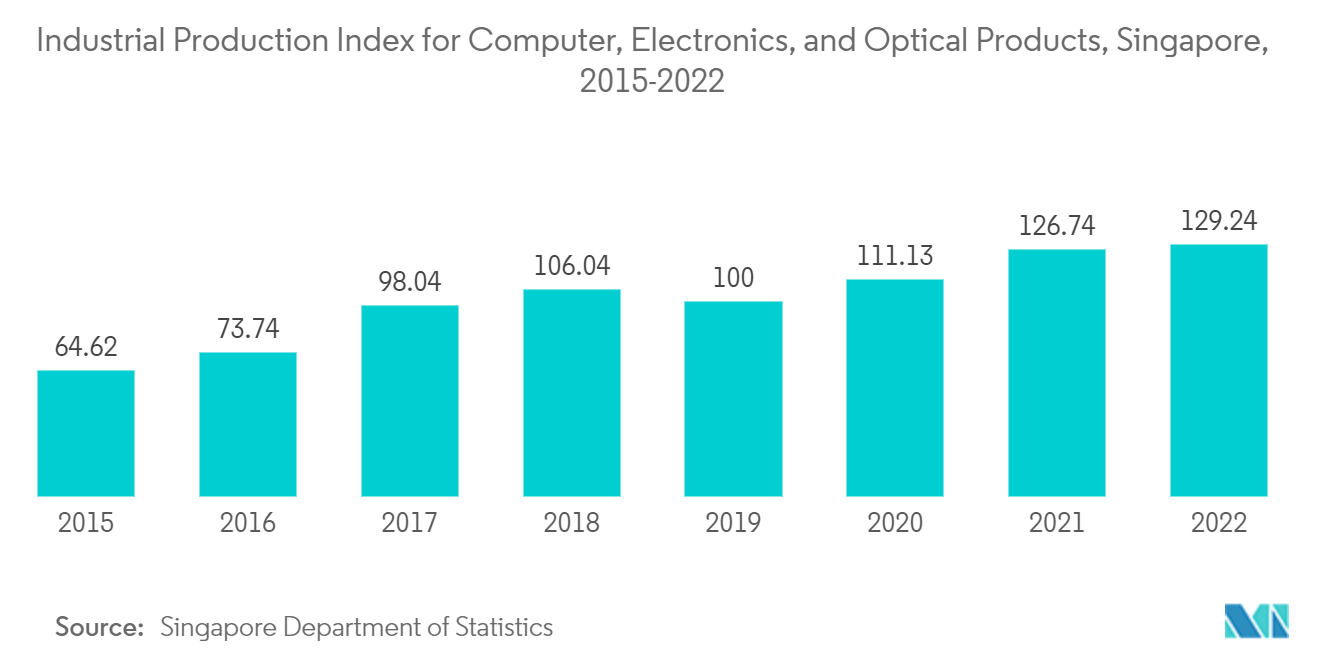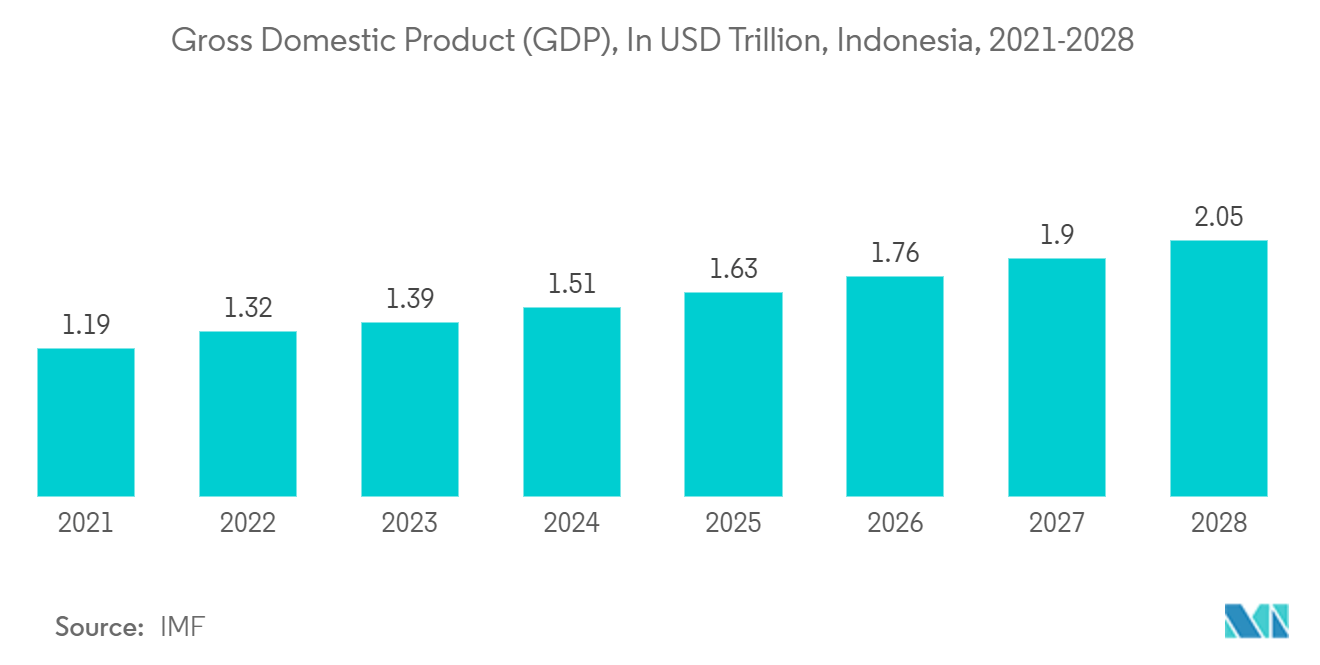Market Trends of Southeast Asia Industrial And Service Robot Industry
Electronics/Electrical to Witness Growth
- Industrial robots like articulated industrial robots and SCARA are heavily used in the electronics/electrical industry. Articulated robots are used for assembling electronic components and devices. They can handle delicate and precise tasks such as soldering and inserting components onto circuit boards. They are utilized in pick-and-place operations and are extremely useful in high-speed production lines where efficiency and precision are crucial. They can also perform visual inspections, check for defects, and ensure that products meet specific standards.
- Further, according to Statistics Malaysia, the manufacturing of electronic components and boards, communication equipment, and consumer electronics in Malaysia was estimated to contribute 4.9% to the gross domestic products in 2022, an increase from 4.6% in 2021. The manufacturing industry in Malaysia had a 23.4% share of the GDP in the same year, with electronic components manufacturing as the biggest contributor.
- Additionally, according to the Singapore Department of Statistics, in 2022, the industrial production index of computers, electronics, and optical products in Singapore was 129.24. This was the highest value in a decade. Singapore is among the leading manufacturers of electronics such as semiconductors worldwide, which is likely to amp up the growth in the market studied.
- In October 2022, armed with low prices and sophisticated technology, a prominent Indonesian contract manufacturer, Satnusa, announced that it is utilizing the global shift away from Chinese production to diversify its client base and become one of Southeast Asia's major players. Satnusa is wooing the US and European companies looking to shift production from mainland China and Taiwan to Southeast Asia. Many of the smartphones and other products it builds are currently sold in Indonesia.
- Satnusa benefits from government incentives as well. The entire island of Batam is designated a free trade zone, where companies enjoy cheaper import duties, streamlined export procedures, and other perks. Indonesia's government could provide additional benefits in a bid to boost exports. Such developments would offer several opportunities for the penetration of the market studied.

Indonesia is Expected to Hold a Significant Share
- Indonesia is a notable industrial manufacturer that extensively embraces automation in its sectors. Manufacturing plays a significant role in a nation's GDP, with Indonesia's manufacturing sector contributing more than 18% to the country's economic output in 2022, making it the primary contributor. The strong manufacturing activities in Indonesia and Malaysia are expected to bolster the demand for the market under examination.
- According to local economic studies, it has been determined that micro, small, and medium enterprises (MSMEs) constitute more than 99% of all business entities in Indonesia, with the food and beverage sector accounting for at least 44% of these enterprises. Consequently, the increasing adoption of technology in the manufacturing sectors of the region will significantly augment market prospects. As an illustration, the Indonesian government is actively encouraging the local food and beverage industry to embrace digital advancements and transition toward the utilization of technological innovations as an integral component of the national Making Industry 4.0 industrial strategy.
- As a result, the F&B sector is significantly witnessing innovative robotic adoption, and several vendors in the region are constantly investing in launching new solutions, which is creating a positive impact on the market's growth. For instance, in January 2022, GoFood made an announcement regarding its pioneering adoption of automated robot technology. The robot, affectionately named "Bellabot," is equipped with advanced features such as 3D sensors, sound detection, and touch-based interaction. This development reflects GoFood's unwavering commitment to enhancing the entire food ordering process and delivering an exceptional culinary experience to its users. By introducing this specialized robot, GoFood, as a part of the broader GoTo ecosystem, has become the first online food delivery (OFD) service in Indonesia to embrace automated robot technology. The implementation of automated robot technology by GoFood has been carried out in collaboration with PT Pudu Robot Indonesia. Such innovative vendor activities in enhancing technological adoption in the F&B sector will enhance the market's growth.
- Moreover, according to data provided by Statistics Indonesia (BPS), the food and beverage (F&B) industry experienced a 4.90% annual growth in 2022, reaching a value of IDR 813.062 billion (USD 51.82 billion). Additionally, the food and beverage manufacturing sector in Indonesia is projected to have a gross domestic product growth rate of approximately 4.9% in the same year. In addition, the country's GDP is expected to cross USD 2 trillion by 2028, according to the IMF. This notable expansion can be attributed to the increasing adoption of automation within the sector, which is expected to play a crucial role in driving market growth.

